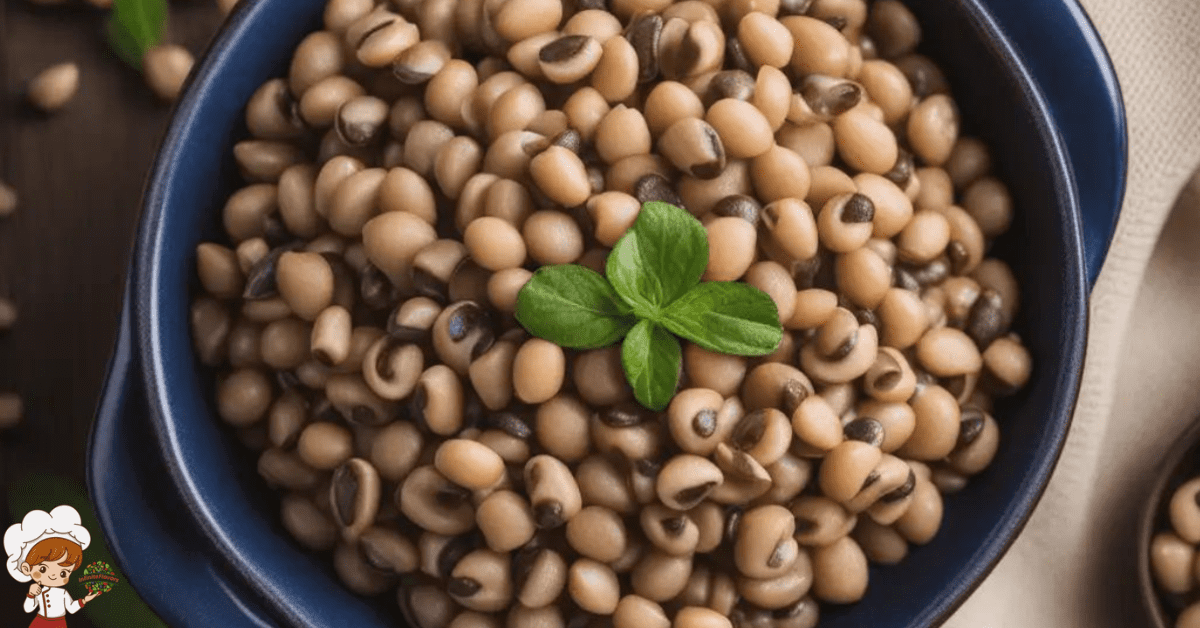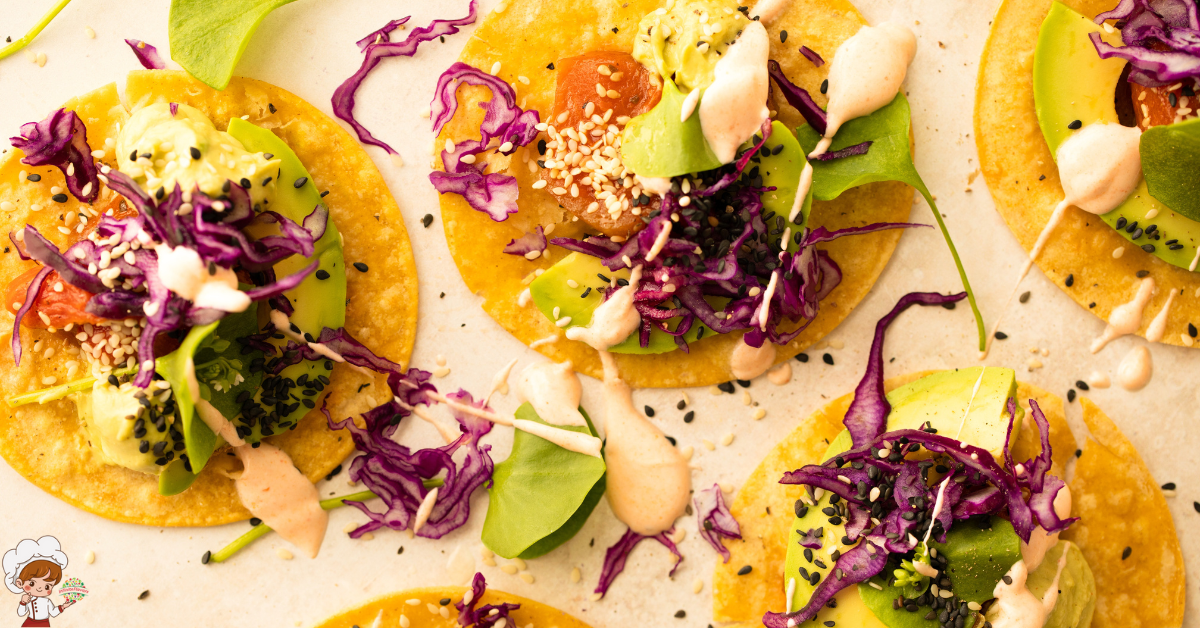History and Origin of Black-Eyed Peas for New Year’s

Black-eyed peas, a humble legume with a rich cultural history, have become synonymous with New Year’s traditions in various parts of the world. The story of these small, cream-colored beans is intertwined with folklore, culinary traditions, and the hope for prosperity in the coming year.
Connection to Juneteenth:
The association between black-eyed peas and Juneteenth, a significant celebration marking the emancipation of enslaved African Americans in the United States, is a poignant testament to the resilience and cultural significance of this humble legume.
Symbolism of Prosperity:
In the context of Juneteenth, black-eyed peas are often imbued with symbolism, representing prosperity, good luck, and resilience. The legume’s small, round shape has been likened to coins, signifying wealth and abundance for the future.
Historical Roots:
The tradition of consuming black-eyed peas on Juneteenth has deep historical roots, dating back to the post-Civil War era. As newly freed African Americans sought to rebuild their lives, they incorporated familiar foods from their West African heritage into their celebrations, establishing enduring culinary traditions.
Culinary Customs:
On Juneteenth, it became customary for black-eyed peas to be prepared in various dishes, such as Hoppin’ John, a flavorful combination of peas, rice, and seasonings. This dish, along with others featuring black-eyed peas, became symbolic of the collective journey toward freedom and the hope for a better future.
Cultural Continuity:
The connection to Juneteenth underscores the role of food in preserving cultural continuity. Through the preparation and consumption of dishes featuring black-eyed peas, African Americans honored their ancestors, celebrated their resilience, and passed down culinary traditions from generation to generation.
Community Celebrations:
Juneteenth celebrations often involve communal gatherings, where families and communities come together to share meals and stories. Black-eyed peas, with their cultural significance, have become a staple on Juneteenth tables, fostering a sense of unity and connection to heritage.
The connection between black-eyed peas and Juneteenth is a powerful reminder of how food can serve as a link to history, heritage, and the enduring spirit of a community. As people gather to commemorate Juneteenth, the presence of black-eyed peas on the table symbolizes not only the journey from enslavement to freedom but also the resilience and strength of a people determined to forge their own path.

Black-Eyed Peas
Ingredients
- 1 pound dried black-eyed peas
- 1 medium onion finely chopped
- 2 cloves garlic minced
- 1 smoked ham hock or 1/2 pound bacon chopped
- 4 cups chicken or vegetable broth
- 1 teaspoon dried thyme
- 2 bay leaves
- Salt and black pepper to taste
- 1 tablespoon vegetable oil
- Hot sauce optional, for serving
- Chopped green onions for garnish
Instructions
- Prepare the Peas:
- Rinse the dried black-eyed peas under cold water and remove any debris. Soak the peas overnight or use the quick soak method by placing them in a pot with water, bringing it to a boil, and letting it simmer for 2 minutes. Remove from heat, cover, and let them soak for 1 hour.
- Sauté Aromatics:
- In a large pot, heat vegetable oil over medium heat. Add chopped onions and garlic, sautéing until softened and aromatic.
- Add Smoked Meat:
- If using a ham hock, add it to the pot along with the soaked black-eyed peas. If using bacon, cook it until crispy in a separate pan, then add it to the pot.
- Simmer with Broth:
- Pour in the chicken or vegetable broth, ensuring that the peas are fully submerged. Add dried thyme, bay leaves, salt, and black pepper. Bring the mixture to a boil, then reduce the heat to a simmer.
- Cook Until Tender:
- Cover the pot and let the black-eyed peas simmer for 1 to 1.5 hours or until they are tender. Stir occasionally, and add more broth if needed to maintain the desired consistency.
- Adjust Seasoning:
- Taste the peas and adjust the seasoning if necessary. Remove the bay leaves and ham hock (pulling off any meat and adding it back to the pot).
- Serve:
- Serve the black-eyed peas over rice or with cornbread. Garnish with chopped green onions and offer hot sauce on the side for those who enjoy extra heat.
- Enjoy:
- Enjoy this classic Southern dish as a main course or side, embracing its rich flavors and cultural significance.
New Year’s Traditions:
The custom of eating black-eyed peas on New Year’s Day is particularly popular in the Southern United States. This culinary practice is rooted in folklore and superstitions that link the legume to good luck and prosperity.
Symbol of Prosperity:
The symbolic significance of black-eyed peas as a harbinger of prosperity adds a rich layer to the culinary traditions associated with Juneteenth and beyond. This symbolic interpretation is deeply rooted in cultural beliefs and historical contexts.
Cultural Symbolism:
Black-eyed peas, with their small, coin-like shape, are regarded as a symbol of financial abundance and prosperity in various cultures. This symbolism is particularly pronounced in West African traditions, where legumes resembling coins are seen as tokens of good fortune.
Prosperity for the Future:
The round shape and abundance of black-eyed peas are thought to represent a promising future. Consuming these legumes on Juneteenth is not merely a culinary practice but a symbolic act of inviting prosperity into the lives of those partaking in the celebration.
A Connection to Ancestral Beliefs:
The symbolism of prosperity associated with black-eyed peas reflects a continuity of ancestral beliefs. African cultures often infused everyday practices, including food rituals, with spiritual meanings. By incorporating black-eyed peas into celebratory dishes, individuals pay homage to the wisdom and cultural legacy of their forebears.
Rituals of Renewal:
Juneteenth, as a celebration of emancipation and freedom, aligns with the theme of renewal and the pursuit of a brighter future. The symbolic act of consuming black-eyed peas serves as a ritualistic expression of hope, resilience, and the collective aspiration for prosperity in the years to come.
Culinary Superstitions:
Beyond Juneteenth, black-eyed peas have found their way into various culinary superstitions and New Year’s traditions in different cultures. Many believe that consuming black-eyed peas at the beginning of the year brings good luck and financial prosperity for the months ahead.
Understanding the symbolism of black-eyed peas as a symbol of prosperity provides a deeper appreciation for the cultural resonance of this humble legume. Beyond its culinary appeal, the act of incorporating black-eyed peas into celebratory meals becomes a meaningful gesture, intertwining cultural heritage with the universal human desire for a prosperous and thriving future.
Accompanying Ingredients:
The preparation of black-eyed peas for Juneteenth celebrations involves a thoughtful selection of accompanying ingredients, enhancing both the flavor profile and the cultural significance of the dish. These elements contribute to a harmonious and meaningful culinary experience.
Collard Greens:
Collard greens are a staple side dish often paired with black-eyed peas. These hearty, dark leafy greens are rich in flavor and nutrients, symbolizing wealth and prosperity. The combination of black-eyed peas and collard greens is known as “Hoppin’ John” in Southern cuisine, a dish synonymous with good luck and abundance.
Cornbread:
Cornbread is a classic accompaniment to black-eyed peas, offering a delicious contrast in texture and a hint of sweetness. The golden color of cornbread symbolizes prosperity, and its crumbly texture complements the softness of the peas. Together, black-eyed peas, collard greens, and cornbread create a trio of flavors that represents a well-rounded and bountiful meal.
Smoked Meats:
Smoked meats, such as ham hocks or bacon, are frequently incorporated into black-eyed pea recipes. The smokiness adds depth to the dish, and the use of pork products pays homage to traditional Southern cooking. The inclusion of smoked meats imparts a savory and comforting essence, elevating the overall taste experience.
Onions and Garlic:
Onions and garlic contribute aromatic layers to the dish, enhancing its savory profile. These aromatic vegetables are often sautéed before adding black-eyed peas, creating a flavorful base. The combination of onions and garlic not only adds depth to the dish but also reflects the culinary diversity inherent in African American cuisine.
Spices and Seasonings:
Various spices and seasonings, such as thyme, bay leaves, and black pepper, are used to infuse the dish with warmth and complexity. The careful selection of spices reflects a culinary heritage that values nuanced flavors and the art of seasoning. These elements contribute to a well-balanced and soul-satisfying meal.
Understanding the significance of these accompanying ingredients provides insight into the cultural nuances of Juneteenth culinary traditions. Each element contributes to a holistic experience, where flavors, symbolism, and history converge to create a meal that is both delicious and deeply meaningful.
Cultural Variations:
The tradition of eating black-eyed peas on New Year’s Day has variations across cultures. Whether it’s the American South, the Caribbean, or Brazil, the symbolic act of consuming black-eyed peas transcends borders, uniting communities in their shared hope for a prosperous year.
Recipes Passed Down Through Generations:
Families often pass down recipes for preparing black-eyed peas, ensuring the continuity of this New Year’s tradition. These recipes may include variations such as seasoning with smoked ham hocks, bacon, or spices, adding depth of flavor to the dish.
Conclusion: Black-Eyed Peas
As the clock strikes midnight on New Year’s Eve, and families gather to share a meal, the presence of black-eyed peas on the table represents more than just a dish; it embodies cultural heritage, resilience, and the collective optimism for a year filled with abundance and good fortune. The history and origin of black-eyed peas for New Year’s underscore the power of food to connect us to our roots and instill hope for a brighter future.








